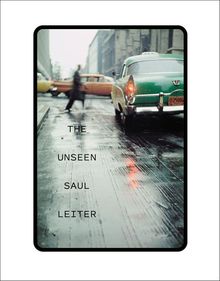PHOTOGRAPHY MONOGRAPHS
|
|
in stock $55.00 Free Shipping UPS GROUND IN THE CONTINENTAL U.S. |
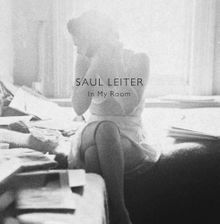 Saul Leiter: In My Room
Saul Leiter: In My Room
Published by Steidl.
Foreword by Robert Benton.
Saul Leiter was born in Pittsburgh in 1923. In 1946 he moved to New York to become a painter, but was encouraged to pursue photography by the photographic experimentation and influence of his friend, the Abstract Expressionist Richard Pousette-Dart. Leiter subsequently enjoyed a successful career as a fashion photographer spanning three decades, and his images were published in magazines such as Esquire, Harper’s Bazaar, Elle and British Vogue. His work is held in many prestigious private and public collections, including The Museum of Modern Art, New York, the Whitney Museum of American Art and the Victoria and Albert Museum. Leiter died in November 2013.
PUBLISHER
Steidl
BOOK FORMAT
Clth, 8 x 8 in. / 192 pgs / 85 bw.
PUBLISHING STATUS
Pub Date 7/17/2018
Active
DISTRIBUTION
D.A.P. Exclusive
Catalog: SPRING 2016 p. 28
PRODUCT DETAILS
ISBN 9783958291034 TRADE
List Price: $45.00 CAD $60.00
AVAILABILITY
Out of stock
STATUS: Out of stock Temporarily out of stock pending additional inventory. |
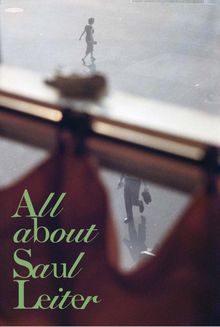 Saul Leiter: All about Saul Leiter
Saul Leiter: All about Saul Leiter
Published by RM/Seigensha.
Text by Margit Erb, Pauline Vermare, Motoyuki Shibata.
Photography lovers the world over are now embracing Saul Leiter, who has enjoyed a remarkable revival since fading into relative obscurity in the 1980s. In this gorgeously produced volume—the Japanese edition of which was selected by photographer Todd Hido as one of Photo-eye online bookstore's Best Books of 2017—some 200 works, from early street photographs and images for advertising to nudes and paintings, cover Leiter's career from the 1940s onward. These are accompanied by quotations from the artist himself that express his singular worldview.
Saul Leiter was born in Pittsburgh in 1923. He pioneered a painterly approach to color photography in the 1940s and produced covers for fashion magazines such as Vogue and Harper's Bazaar, before largely withdrawing from public attention in the 1980s. The publication of his first collection, Early Color, by Steidl in 2006, inspired an avid "rediscovery" that has since led to worldwide exhibitions and the release of a documentary,
In No Great Hurry: 13 Lessons in Life with Saul Leiter (2014). He died in New York in 2013.
PUBLISHER
RM/Seigensha
BOOK FORMAT
Paperback, 6 x 8.5 in. / 312 pgs / 230 color.
PUBLISHING STATUS
Pub Date 8/28/2018
Out of stock indefinitely
DISTRIBUTION
D.A.P. Exclusive
Catalog: FALL 2018 p. 23
PRODUCT DETAILS
ISBN 9788417047498 TRADE
List Price: $29.95 CAD $39.95
AVAILABILITY
Not available
STATUS: Out of stock indefinitely. |
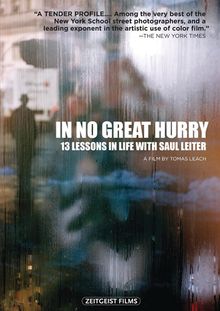 In No Great Hurry: 13 Lessons in Life with Saul Leiter
In No Great Hurry: 13 Lessons in Life with Saul Leiter
Published by Zeitgeist Films.
By Tomas Leach.
PUBLISHER
Zeitgeist Films
BOOK FORMAT
DVD (NTSC), 5 x 7 in.
PUBLISHING STATUS
Pub Date 5/26/2015
Out of stock indefinitely
DISTRIBUTION
D.A.P. Exclusive
Catalog: SPRING 2015 p. 113
PRODUCT DETAILS
ISBN 9781938922770 TRADE
List Price: $29.99 CAD $40.00
AVAILABILITY
Not available
STATUS: Out of stock indefinitely. |
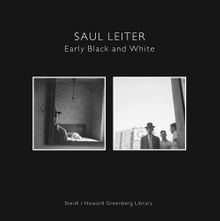 Saul Leiter: Early Black and White
Saul Leiter: Early Black and White
Published by Steidl.
Introduction by Martin Harrison.
PUBLISHER
Steidl
BOOK FORMAT
Slip, clth, 2 vols, 8 x 8 in. / 388 pgs / 100 tritone.
PUBLISHING STATUS
Pub Date 10/31/2009
Active
DISTRIBUTION
D.A.P. Exclusive
Catalog: FALL 2007 p. 13
PRODUCT DETAILS
ISBN 9783865214133 TRADE
List Price: $90.00 CAD $120.00
AVAILABILITY
Out of stock
STATUS: Out of stock Temporarily out of stock pending additional inventory. |
 Saul Leiter: Early Color
Saul Leiter: Early Color
Published by Steidl.
Introduction by Martin Harrison.
This is a reprint of the immensely successful Early Color (2008), which presented Saul Leiter's remarkable body of color work to the public for the first time in book form. Although Edward Steichen had exhibited some of Leiter's color photography at The Museum of Modern Art in 1953, it remained virtually unknown to the world thereafter. Leiter moved to New York in 1946 to become a painter, but through his friendship with Richard Pousette-Dart he quickly recognized the creative potential of photography. Leiter continued to paint, exhibiting with Philip Guston and Willem de Kooning, but the camera remained his ever-present means of recording life in the metropolis. None of Leiter's contemporaries, with the partial exception of Helen Levitt, assembled a comparable body of work: subtle, often abstract compositions of lyrical, eloquent color.
PUBLISHER
Steidl
BOOK FORMAT
Clth, 8 x 8 in. / 176 pgs / 100 color.
PUBLISHING STATUS
Pub Date 1/15/2006
Active
DISTRIBUTION
D.A.P. Exclusive
Catalog: FALL 2005 p. 13
PRODUCT DETAILS
ISBN 9783865211392 TRADE
List Price: $45.00 CAD $60.00
AVAILABILITY
Out of stock
STATUS: Out of stock Temporarily out of stock pending additional inventory. |
